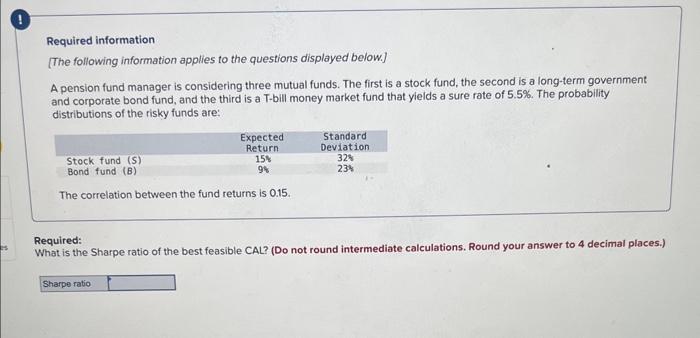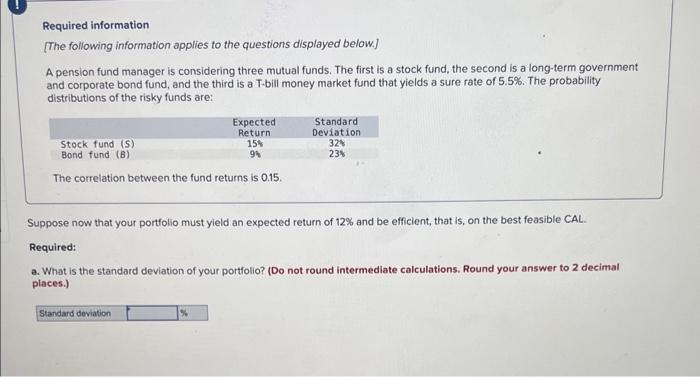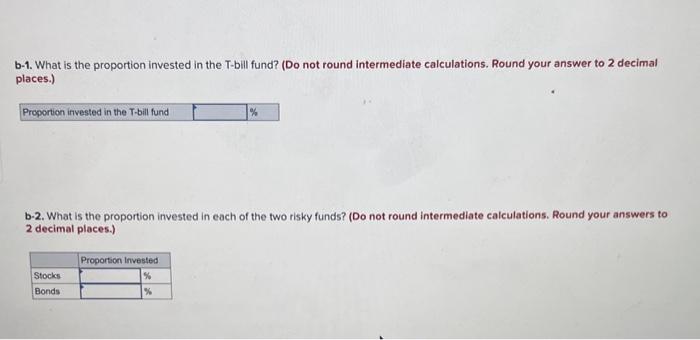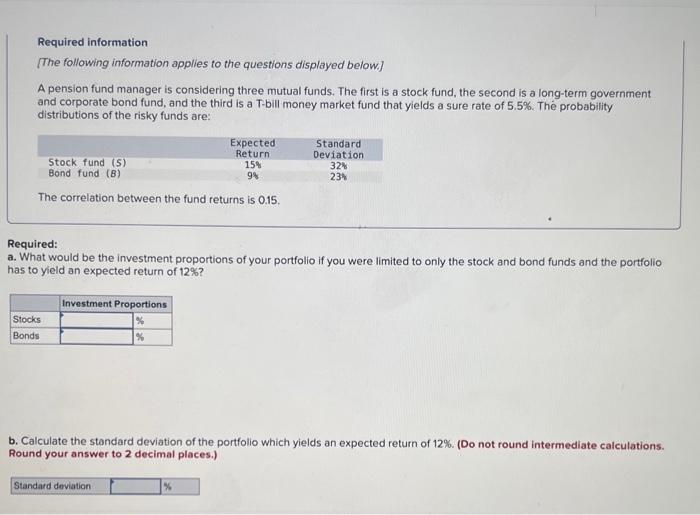They're different parts to the same question:
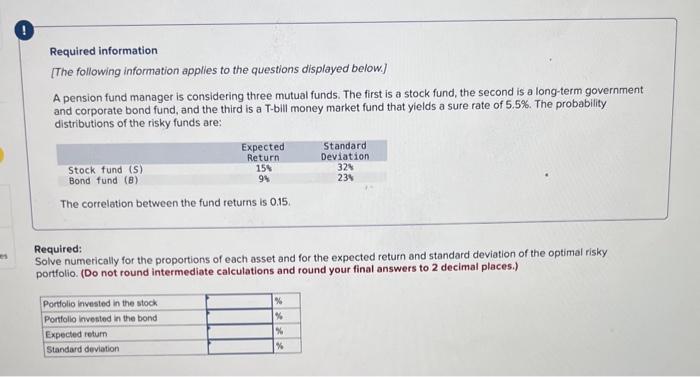
Required information [The following information applies to the questions displayed below] A pension fund manager is considering three mutual funds. The first is a stock fund, the second is a long-term government and corporate bond fund, and the third is a T-bill money market fund that yields a sure rate of 5.5%. The probability distributions of the risky funds are: The correlation between the fund returns is 0.15 . Required: Solve numerically for the proportions of each asset and for the expected return and standard deviation of the optimal risky portfolio. (Do not round intermediate calculations and round your final answers to 2 decimal places.) Required information [The following information applies to the questions displayed below.] A pension fund manager is considering three mutual funds. The first is a stock fund, the second is a long-term government and corporate bond fund, and the third is a T-bill money market fund that yields a sure rate of 5.5\%. The probability distributions of the risky funds are: The correlation between the fund returns is 0.15 . Required: What is the Sharpe ratio of the best feasible CAL? (Do not round intermediate calculations. Round your answer to 4 decimal places.) Required information [The following information applies to the questions displayed below.] A pension fund manager is considering three mutual funds. The first is a stock fund, the second is a long-term government and corporate bond fund, and the third is a T-bill money market fund that yields a sure rate of 5.5%. The probability distributions of the risky funds are: The correlation between the fund returns is 0.15 . Suppose now that your portfolio must yleid an expected return of 12% and be efficient, that is, on the best feasible CAL. Required: a. What is the standard deviation of your portfolio? (Do not round intermediate calculations. Round your answer to 2 decimal places.) b-1. What is the proportion invested in the T-bill fund? (Do not round intermediate calculations. Round your answer to 2 decimal places.) b-2. What is the proportion invested in each of the two risky funds? (Do not round intermediate calculations. Round your answers to 2 decimal places.) Required information [The following information applies to the questions displayed below] A pension fund manager is considering three mutual funds. The first is a stock fund, the second is a long-term government and corporate bond fund, and the third is a T-bill money market fund that yields a sure rate of 5.5%. The probability distributions of the risky funds are: The correlation between the fund returns is 0.15 . required: What would be the investment proportions of your portfolio if you were limited to only the stock and bond funds and the portfolio as to yield an expected return of 12% ? D. Calculate the standard deviation of the portfolio which yields an expected return of 12%. (Do not round intermediate calculations. Round your answer to 2 decimal places.)


